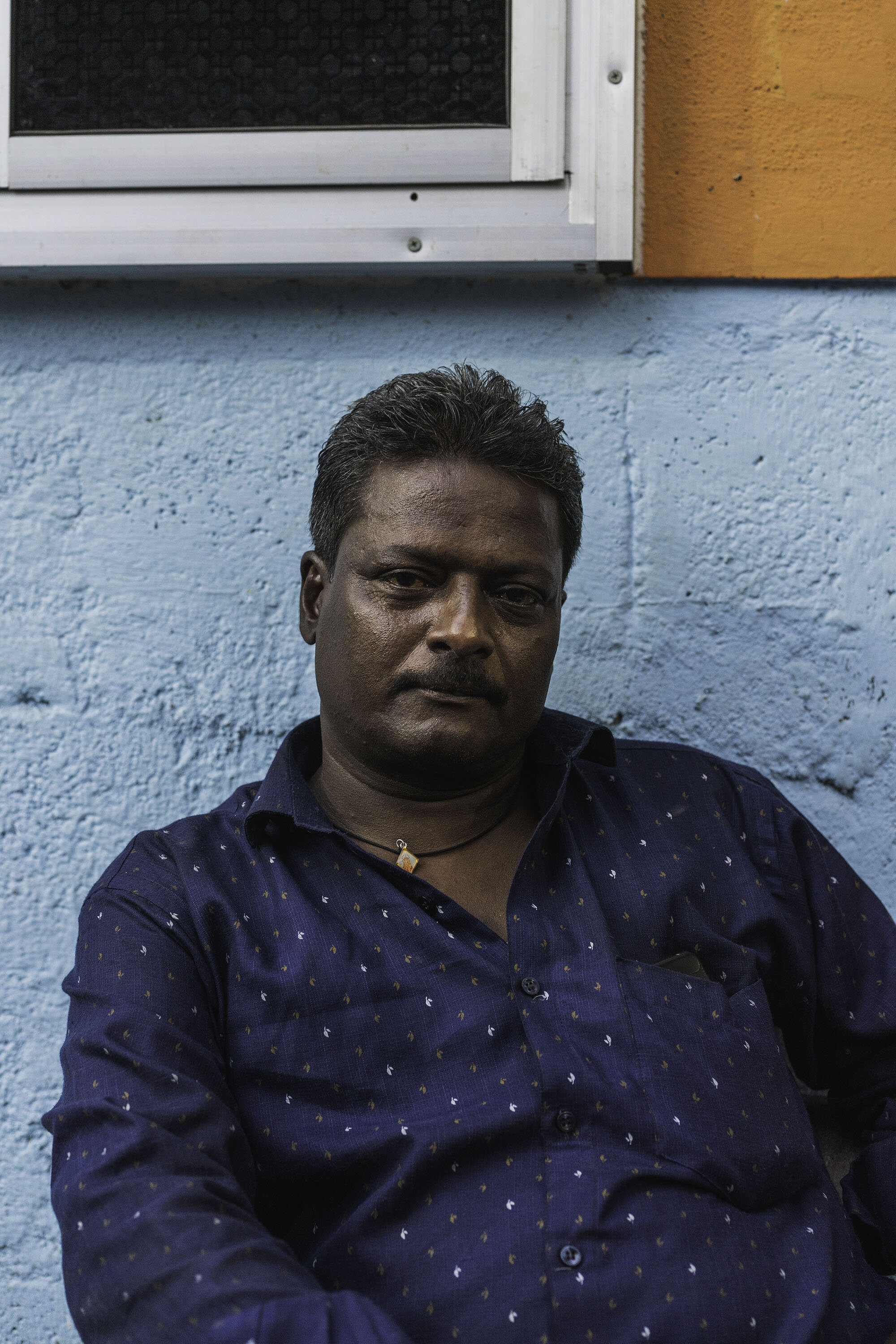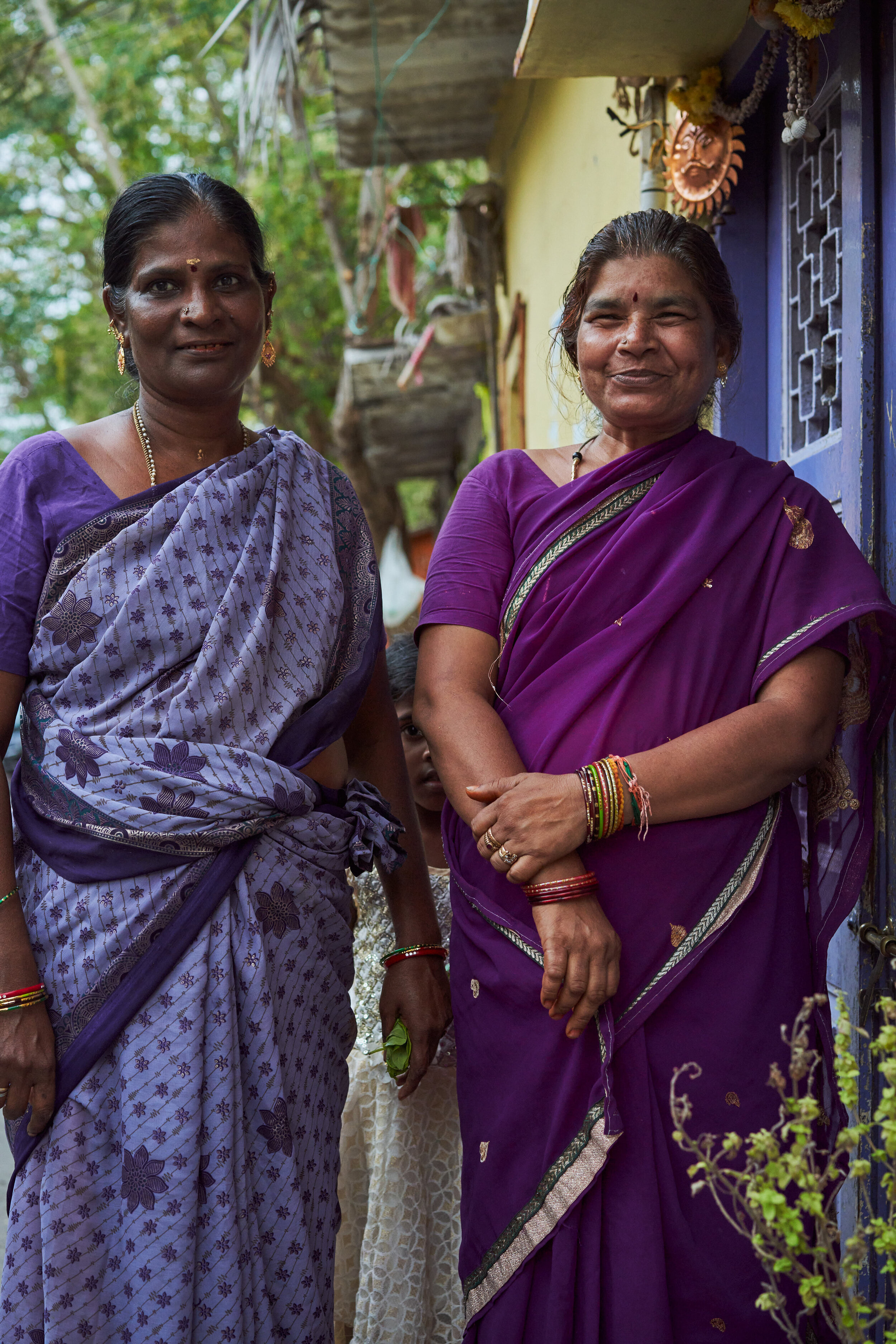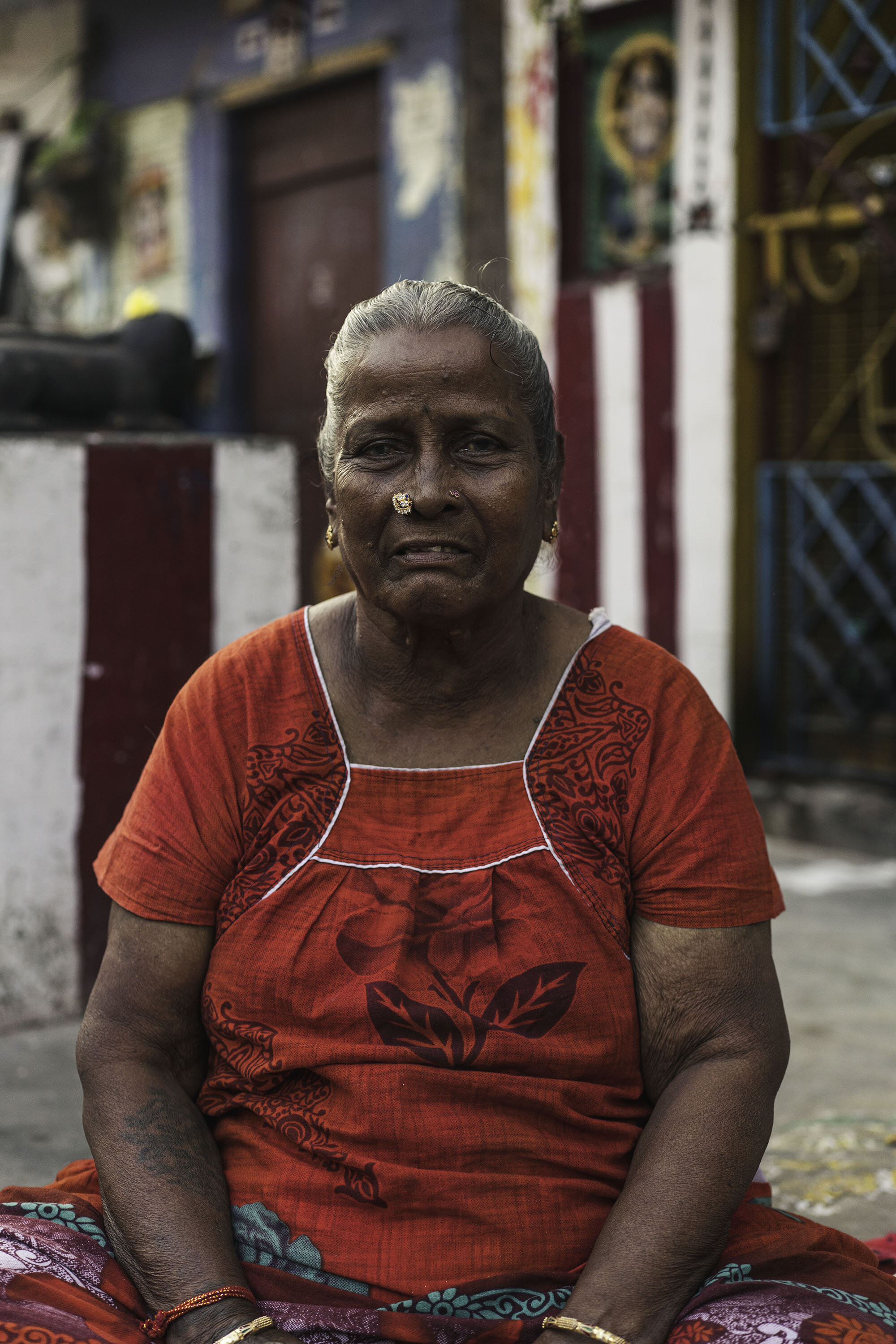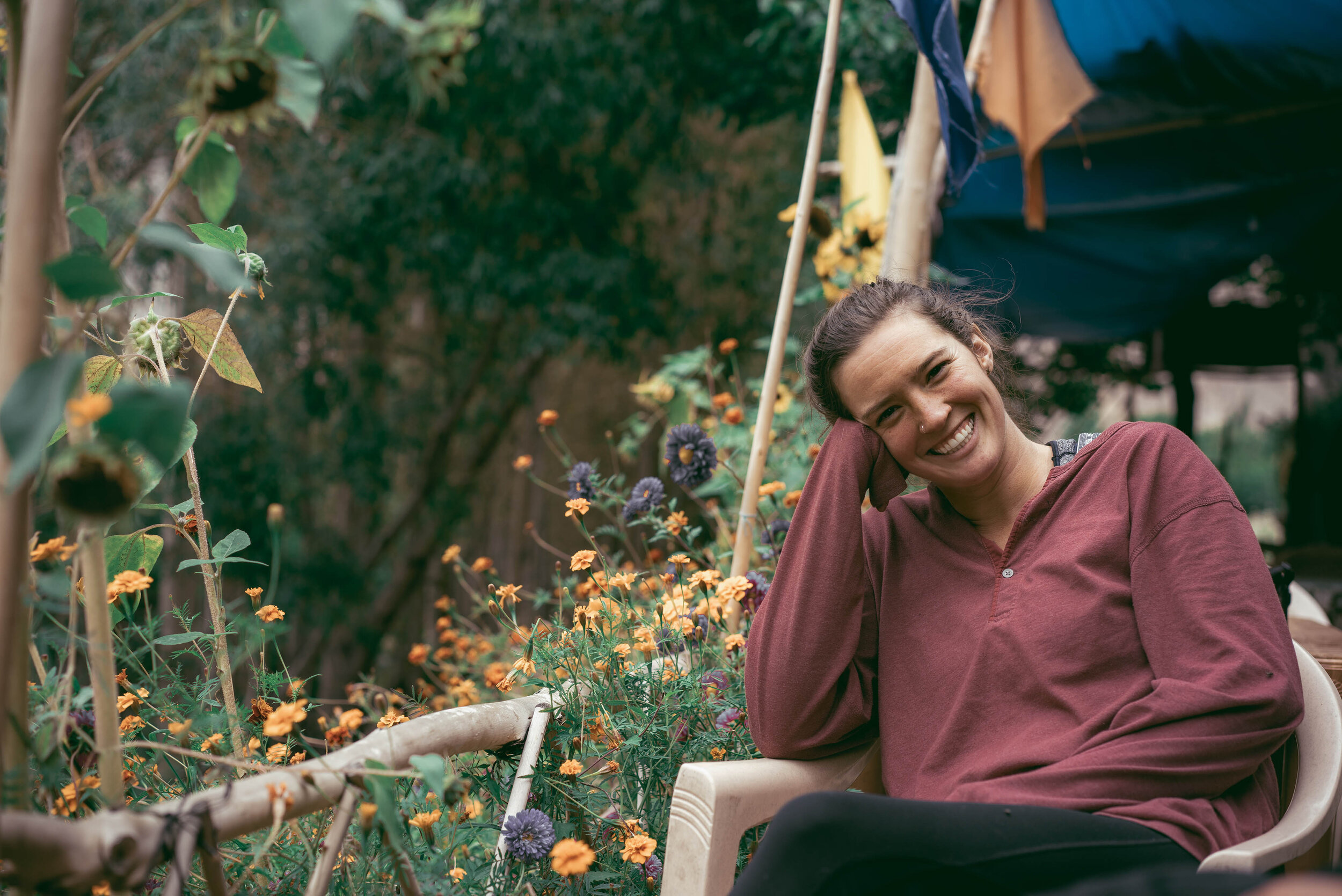Growth within Madras
February 2020.
Southern India. Its warmth and sweetness, a constant gentle breeze rustles from the Bay of Bengal.
Chennai (formerly Madras), is a bustling port for the tech industry wrapped around layers of growth: history, culture, religion, music, colonialism, film, cricket, food, conservationism. Each seasonal expansion brings new people, ideas and motives to the port. New growth pushes up against the sea walls of India. Ever outward.
This story can be found in any part of the world, no matter the economy, culture, religion. Growth pushes some. Whether migrants, the elderly, religions. While displacement can follow, others find a way to grow in the seams. Standing where they have always stood and enforcing the city to spread around them.
St. Mary’s Road is, like most in Chennai, tree lined. Trees that grow where they wish. Any direction they choose is allowed, the world and the pavement make space. Starting at the Western end; the Crowne Palace and Raintree hotels house visitors, business trips, weddings from the rest of India and beyond. Those who come to the relaxed side of the country to explore and, somewhat paradoxically, to work.
Travel east, towards the sea and pass a communal cricket ground among street stalls and a corner where TukTuks came to be reborn by timeworn hands. Floodlights illuminate the dusty square that enshrines four matches. The shouts and balls of children’s games echoing against those of adults. All ages are here to play or watch.
Further still, round a bend and under a bridge -part pasture for a praised cow, part waste dump of a shanty village- and a left turn. Through an archway, a street built between the rings of growth, is an inter-seasonal community. Curtained from the world behind is a clearing. A roadway wide enough at times for a bike, so that the apartments on either side, holding back progress, can speak to each other no matter the weather.
Push in deeper and the people (rickshaw drivers, electronics repairmen, cleaners, grandparents, weavers, children, students) greet all who make it that far.
The pressure from outside creaks and groans but, a deluge around a submarine. Inside, the laughter of neighbours, the chatter of ancient friends, of older children keeping the younger just out of reach of trouble. Kids swapping clothes, women and men standing at windows watching each others televisions.
A city within a city. The hybrid of past and present, and the true core of Madras is here. Among the goats and rubbish fires. When the rain comes, and the trees drink thirstily, the street becomes river, and takes the little excess that can be spared into the roots and roads outside.
There will seemingly always be space to grow in Chennai.
Friendships on the Roof of the World
The monsoon leaves no stone untouched in the whole of India it seems. Not even 11,000ft above sea level in Leh, Kashmir. Arriving in early September I’d just missed the rains, but their footprints were left in the walls built precariously throughout the city. Mortar tumbled down into gutters, and previously secluded gardens of vibrant green began to peek through to the streets.
“They’re fantastic,” my host says as he serves a pot of tea, “we wait all year, it becomes unbearably hot and then…” he sits down heavily to make his point.
I was here very much on my own, a solo trip away from the UK to clear my head and really work on my photography. I didn’t want the distraction of other people’s wants and needs to stop me from building my portfolio. So after 3 weeks in Mumbai for a festival, I took a flight away from the crowds up into the Himalayas, what felt like the outskirts of our planet. I’d landed a few hours earlier, and the altitude was just starting to get to me, apparently the liquorice tea I had been given would help.
As my host and I spoke, the last strands of the monsoon forced themselves out of the sky and began showering on the mountainside around us. Realising the opportunity, I grabbed my camera and ran up the stairs of the guest house and further up a ladder onto the roof. Before me were the sprawling rooftops of Leh and above them, a rainbow arcing between the high peaks. I didn’t want to risk losing the shot and raised the viewfinder to my face, edging along the roof as I shot. I would like to say that it was worth it for the shot, but it wasn’t. Maybe if I’d been allowed to continue edging along I could have framed it right, maybe if I’d had some more time. Maybe, if the monsoon hadn’t been all-pervasive, and the walls of the building better made.
I had shuffled onto the corner of the guesthouse’s storage shed, for some reason positioned on top of the guesthouse. Before I’d had a chance to realise my mistake, I felt the ground slip away as the wall crumbled, looking down with just enough time to have that ‘this is going to hurt’ thought. I crashed through a corrugated fibre roof and to the bottom of a stairwell two storeys below. Pieces of rock and mortar tumbled down on top of me, and as the dust quite literally settled, the pain came. I looked at my knee, and it definitely wasn’t in the place I’d left it. The next thing to well up was a sense of utter stupidity. I was a world away from my family and friends in the UK, I had actively sought to be here, and however lucky I was to limp away from this, I was going to have to pay for the damage and definitely couldn’t do what I’d come here to.
Fast forward a week of bed rest for concussion and a relocated knee, I was limping around my hostel still in Leh, feeling claustrophobic. The entire world was outside, and I was stuck in here, watching groups of travellers going on hikes or renting motorbikes to drive deeper into the Himalayas. I would have given anything to be among them, to be able to go and explore. Suddenly the idea of being with people, of having a small support network was worth more than any photo on my memory cards.
Hostels being what they are, all it took was this shift in mindset, and three days later I was crammed in the back of a Land Rover with four other people, two of them photographers too. We drove up and out of Leh, over one of the worlds highest motorable passes Khardung Lah (17,400ft) and into the Nubra Valley. Together we felt the air thin and watched train upon train of military vehicles snake their way through the moonscape of Kashmir, forever patrolling the border of Pakistan.
In Diskit we camped under the Milky Way, shivering out in the cold to take photos (my wide angle lens had perished in the fall, so I played a supporting role). For hours the five of us lay on sand dunes in the middle of the Himalayas, staring at the universe pass overhead, sharing stories and jokes now so personal no one could decode them except us. The next day we drove to TurTuk, a village unknown to outsiders until 2010, and then we ventured on to the border. Our cameras confiscated, we explored a village with no nationality. We watched school children who left the military funded campus in between India and Pakistan disappear into the surrounding mountains.
We all just happened to love rock climbing and together unloaded bouldering mats and, as one local described it, “with stone heads” we “explored the geology”. We became a team, a group of people from entirely different backgrounds, but who spent a week supporting each other. Hudson and I shared walking sticks when he fell on a climb and sprained his ankle. Annie, Brett and I were never without our cameras in hand. Sarah would explore barley fields with Brett, talking about home, philosophy and permaculture farming techniques. Each night we would clamber into the Land Rover to warm up and play cards until we all fell asleep where we sat.
I had come to Kashmir looking for a personal adventure, to somehow remove myself from social ties as if it were a more pure experience to be alone. That is not to say there isn’t value in travelling alone if I’m honest until now it’s all I’ve known to do. I flew out of the Himalayas with a heavy heart, immediately feeling like I’d forgotten to pack something. I took out my camera and started to scroll through my photos, past the week just gone; the portraits of friendship in the context of the world’s highest peaks, and to one of the pictures from that rooftop. Not my best.
















